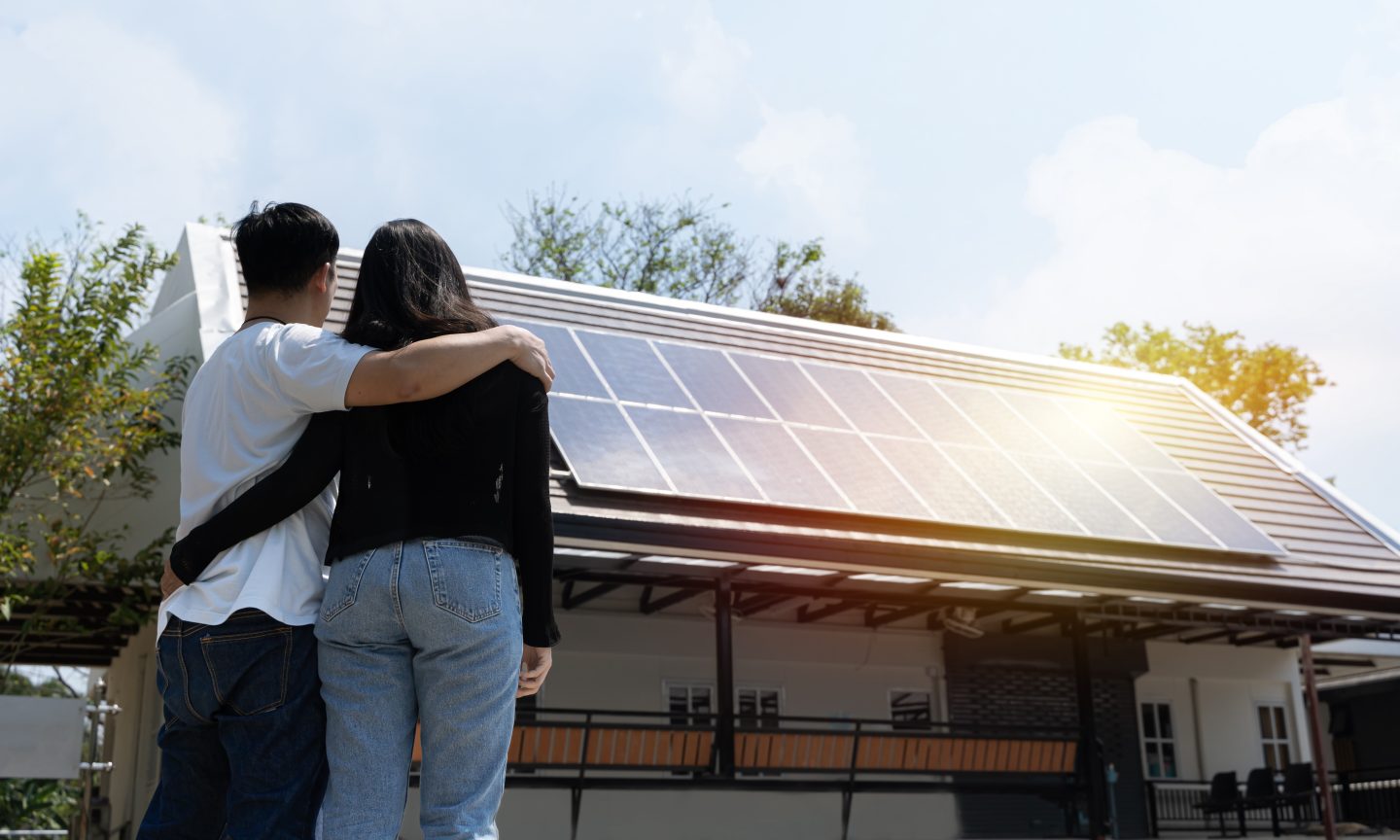The 4 main photo voltaic panel varieties are monocrystalline, polycrystalline, thin-film, and heterojunction. While you start a residential photo voltaic venture, chances are you’ll face the choice about what forms of photo voltaic panels to incorporate. Your objectives, funds and placement will finally decide your only option.
The primary materials that determines how photo voltaic panels work is a semiconductor that converts daylight into electrical energy. This materials absorbs photons and transmits electrons. Silicon is the semiconductor used most frequently. You might also discover panels utilizing completely different semiconductors. Photo voltaic panel kind usually revolves round how the semiconductor works and what the ensuing photo voltaic panel effectivity is
.
As you communicate to a number of installers and examine photo voltaic quotes, contemplate the next forms of photo voltaic panels that you could be encounter.
Monocrystalline panels: Widespread and environment friendly however costly
Good match for restricted roof house the place you need to pack in as a lot energy era as you possibly can.
These panels are sometimes among the many dearer choices in the marketplace.
Monocrystalline photo voltaic panels use sliced wafers of a single crystal of silicon. Retaining the crystal construction of the silicon contributes to the excessive effectivity of those panels. The typical effectivity is 20% to 22%.
Polycrystalline panels: Cheaper and fewer environment friendly
Useful in much less sunny areas, and cheaper than monocrystalline panels.
Much less environment friendly than monocrystalline panels.
Polycrystalline photo voltaic panels use melted and remolded silicon fairly than a single crystal. These panels don’t want complete crystals to make their silicon layers.
Skinny-film panels: Versatile use however decrease effectivity
Good for RVs or in contexts the place chances are you’ll want to maneuver the panels.
The thinness of the panels ends in decrease effectivity in lots of instances.
To make thin-film photo voltaic panels, supplies are deposited in a skinny layer. This ends in a versatile materials that’s simple to move in comparison with inflexible, heavy panels. They are often comprised of cadmium telluride, copper indium gallium selenide (CIGS), or amorphous silicon.
Nonetheless, there are a number of supplies and nonstandard sizing within the thin-film market. It’s finest to be sure to examine your panels precisely. Calculate the scale of the panel, the effectivity, and the ultimate value so you understand how a lot you possibly can count on to generate per greenback spent.
Heterojunction panels: Every kind of panels
Greater effectivity and smaller footprint for a similar wattage.
Excessive worth level for now, although costs might come down if they’re adopted at scale.
Heterojunction panels mix a number of applied sciences in a single panel.
Easy methods to consider photo voltaic panels
The essential parts to judge for every photo voltaic panel are the scale of the panel, the effectivity of the panel and the price. Crunching the numbers is crucial in case your installer hasn’t already labored out the price per watt to your proposed system. Listed below are another ideas:
-
Monocrystalline panels are typically dearer than polycrystalline panels.
-
Skinny-film panels fluctuate in supplies and panel measurement, so that they have a large spectrum of prices per kWh.
-
You’ll want to perceive the kWh a panel produces relative to its value; don’t simply have a look at worth per panel. If a panel generates extra electrical energy in comparison with a much less environment friendly panel, it could be cost-effective to pay a bit extra for it.
-
If you wish to generate a variety of wattage with a small footprint, chances are you’ll want extra environment friendly, dearer panels to get the electrical energy you search.
-
Different components embrace aesthetics of the panels on the roof, guarantee and model status. In some instances, it’s essential to know concerning the precise producer fairly than the kind of panel to evaluate these parts.
How to decide on one of the best kind of photo voltaic panels for you
1. Measure how a lot house you’ve and the way a lot energy you need.
Lately, most residential photo voltaic panels are monocrystalline. However even when that’s all that’s obtainable to you, the effectivity and price fluctuate by model. Matt Powers, founding father of Advantage Photo voltaic in Charlottesville, Virginia, factors out that value per panel doesn’t all the time inform the entire story.
“If space is a premium, then it’s probably necessary to use higher-efficiency panels to offset your electric usage. But if space is not a premium, and you can have two more panels that are slightly less efficient but give you larger system size overall, then you’ll likely save more money and produce more energy in the long run,” Powers stated.
2. Take a look at opinions of the particular panel model, not simply the sort.
“Not all panels are equal. Some perform better in heat, shade, or over time. While the overall quality in the U.S. has gotten better, there are still cheap panels out there that won’t last or perform as well. You don’t want to commit without knowing exactly what’s going on your roof,” stated Steve Grant, co-founder and COO of Guardian Dwelling in Dunedin, Florida.
3. Know the prices and worth of all parts, not simply the panels.
4. Perceive the warranties concerned.
Warranties on photo voltaic panels usually embrace a piece/product guarantee time period for the bodily power of the panels, in addition to an influence guarantee that addresses the gradual discount in effectivity/energy manufacturing over the lifetime of the panel.
5. Know what changing panels will appear like.
Figuring out that you’ve a powerful assure of high quality generally is a consider deciding which kind of photo voltaic panels might be your most suitable option.
#Photo voltaic #Panel #Sorts

Leave a Reply